8 WordPress Plugins to Internally Link Content (Auto & Manual)

Links are essential for SEO, user experience, content discovery, and more. Google tested a version of their search engine that ignored link metrics in their algorithm, and the results were awful. They're the backbone the web is built on – quite literally, the strands of the web – so it stands to reason that you should be putting plenty of effort into optimizing them.
There are thousands of guides for external linking and link building, but I see relatively few people talking about internal link structure. Internal links are just as important as external backlinks, but they're all too easy to forget about. I always make sure I have plenty of internal links and outbound links on my posts. It's pretty hard not to do that organically, anyway.
In the past, I've written tutorials about internal link building, primarily in the sense of "how many you should have." There's no correct answer, though; it's all about context and value. You can read that post for a rundown.
Today, I wanted to talk about WordPress plugins. There are a lot of plugins out there that deal with internal link suggestions in different ways. Some of these plugins handle your links automatically, and others work more semi-automatically. I will recommend various plugins and their features and leave it up to you to decide which ones to use.
The Risks of Automation
You'll notice that some of the plugins I've recommended below are automated link plugins. These, well, automatically insert links into your posts where the plugin thinks they're relevant. There are benefits and drawbacks to using plugins like these.
On the benefits side, it ensures that every new post you create has plenty of internal links. Even if you forget to include internal links, the plugins ensure you have at least a few of them. Some are configurable and robust, while others use their black-box algorithms to determine relevance and hope that it works.
On the drawbacks side, there are a few.
- It's typically not a good idea to generate automatic links for Google. This is especially true of dynamic links. Automatic links can come off as spammy. An automatic link inserter might not have a good idea of context or even care about it at all. If I interrupted this list with a link to a completely unrelated piece of content I wrote, would anyone like that? Would it be valuable? Probably not, but that's what some of these plugins can do. They aren't exactly powered by artificial intelligence; most of them just tie keywords to pages or categories that may be a good match.
- Automatic link insertion can go overboard. You can configure a plugin to link what is an appropriate amount of times for some content, but it might end up inserting too many links in some pages and might even insert links into pages where you don't want them.
- Some automatic link insertions may not be reversible. Let's say that you have a WordPress blog with 200 blog posts. Suppose you were to enable automatic link insertion and misconfigure it. In that case, some of these plugins may inject incorrect links into your posts, and you may end up having to manually audit all 200 of them to undo whatever they did. That would be a nightmare for blogs with thousands of posts - at that point, you should restore from a backup.
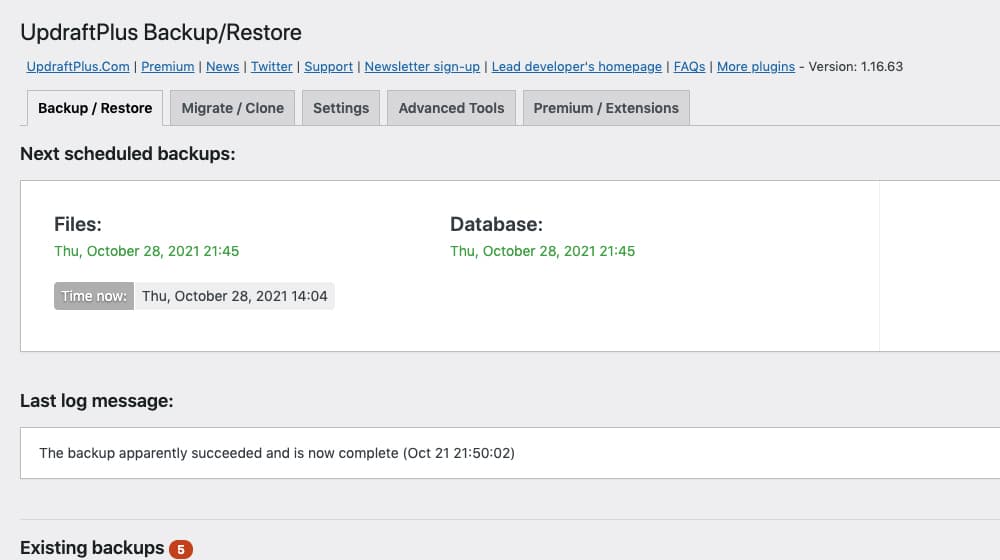
The moral of the story is that you need to pay attention to what any automated plugin is doing and make sure it's not doing something wildly off-base or just plain wrong. So, while I'm recommending some auto-linking plugins below, they're far from the only options, and I would generally caution you against trusting them blindly. At the very least, review your links from time to time.
Terminology for WordPress Plugins
I've listed a couple of keywords for what they do and how they act in each plugin. I wanted to define them here so I don't have to reiterate those definitions in each section.
- Automated/Manual – Automated means the plugin will insert links into your content automatically, either based on some list you provide, based on keywords or its algorithm, or in some other way. Manual means the plugin will only suggest the links to add, and you have to add them yourself.
- Contextual/Non-Contextual – This is essentially the descriptor of whether or not the plugin uses an algorithm to determine what links go where, or if it just more-or-less randomly picks links from a list or your site across the board. Most of the plugins on this list, if not all of them, will be at least a little contextual.
- Content/Non-Content – This is all about where the links are placed. Are they above or below the content, or are they in the content? These can have very different modes of operation.
- Free/Paid – This is pretty obvious; is the plugin free to install, or does it cost money to use the linking features? Some will be free with an optional "Pro" pricing, as well.
Now, let's look into the plugins.
YARPP
Yet Another Related Posts Plugin, or YARPP, is a highly-recommended and commonly-used WordPress plugin. What it does is simple: it creates a section at the bottom of your blog posts, where it links to other blog posts on your site. You can configure it within some limits, and it will show the preview image, title, and description of the articles it links.
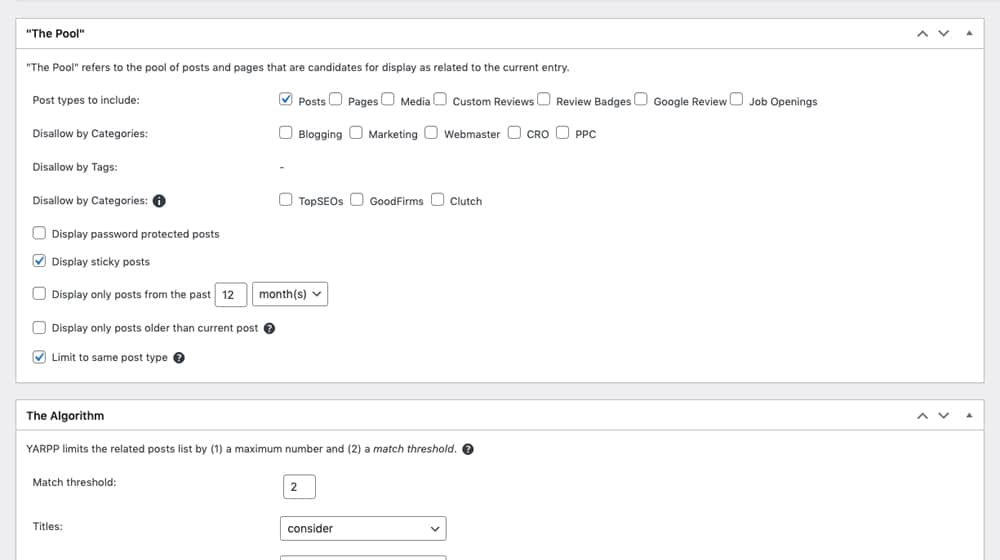
YARPP is automated in that it uses an algorithm to decide what content it links to from what other content. It primarily uses data from categories and tags to do this, so it's not very sophisticated, but it still works pretty decently. It's also one of the oldest free plugins with active development without changing its core focus.
In general, I consider something like YARPP to be essential to a modern site. It's an easy and expected way to cycle people through your links. Even though it's dynamically generated (and thus likely can have issues with Google indexing), it's still potent for user retention and bounce rate metrics.
Yoast
Yoast is one of the most extensive SEO plugins out there, and for years, it has been nearly uncontested as the champion of WordPress SEO. Rank Math has been eating a good portion of their lunch lately, so I expect to see some shakeups in the SEO world.
Yoast has a ton of SEO features, so it's a little too heavy to stand on its own when it comes to internal links. I wouldn't recommend installing Yoast just for the linking features, but if you need all their other SEO features, you can certainly do worse.
Yoast doesn't automatically insert links. Instead, it analyzes the content you're creating as you create it and suggests other content on your site that you can link to in your post.
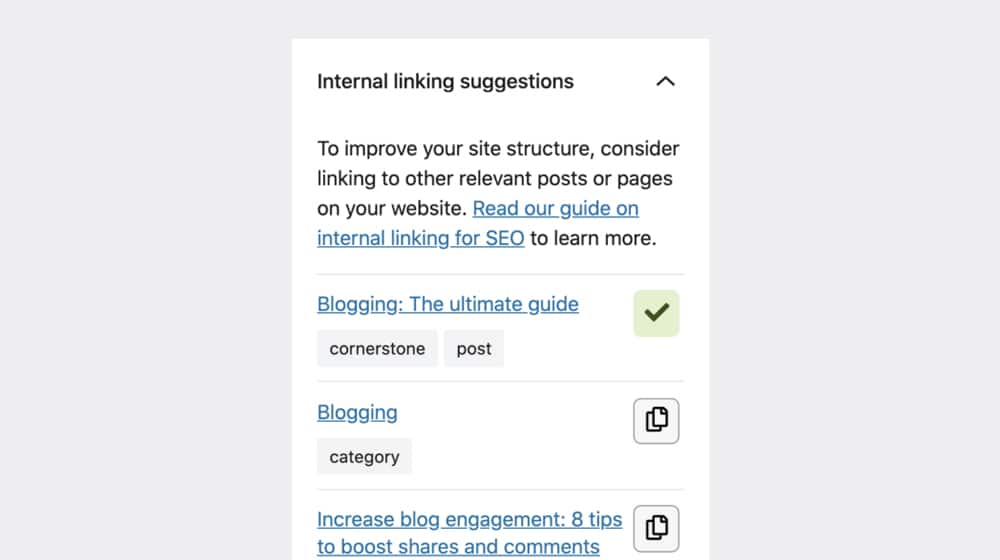
It's contextual because it uses keywords and semantic analysis to provide these recommendations, and since it's suggestions, you can put those links in your content.
The only downside is that it's a premium feature, which means you need to be spending $90 per year on the plugin to get that feature.
Internal Link Juicer
Internal Link Juicer is an automatic internal linking plugin with advanced features that require a lot of configuration. It doesn't use an algorithm. Or, instead, it does, but it requires you to build that algorithm before it starts suggesting relevant links. You have to determine keywords, assign them to posts, and essentially create an entire keyword and linking algorithm for your site. You can block and allow specific posts and taxonomies, and you can configure the number of links per post, how often posts are linked, nofollow and target options, post types, blacklist, and a whole lot more. When you dig into it, it is an entirely custom automation engine for links within your site.
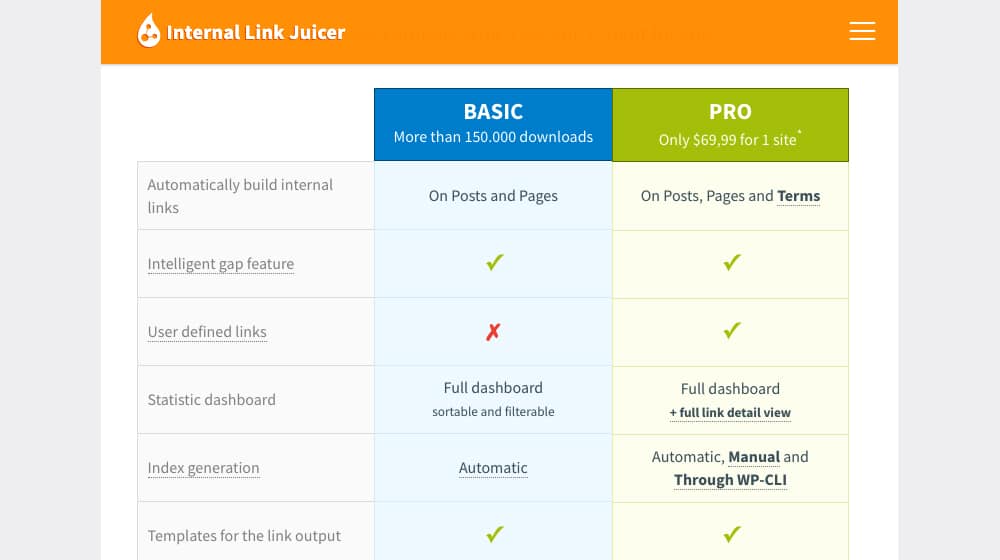
These features make it both extremely powerful and extremely difficult to use. It's one of the hardest to configure plugins on this list, and if you misconfigure it, it can do a lot of damage before you rein it in.
The plugin is free but has a premium version for $70 to get more automation and categorization. I would recommend getting the premium version because the more robust your options, the better it will work with a system like this.
Like YARPP, NavXT is one of my most highly-recommended plugins for any WordPress site. It makes internal links, but not in the way you might think. Take a look at the top of my blog post; you see the links with Home > Blog > Category > Title? Those are breadcrumbs. They're a simple form of static internal link (so Google can index it quickly) and excellent user navigation.
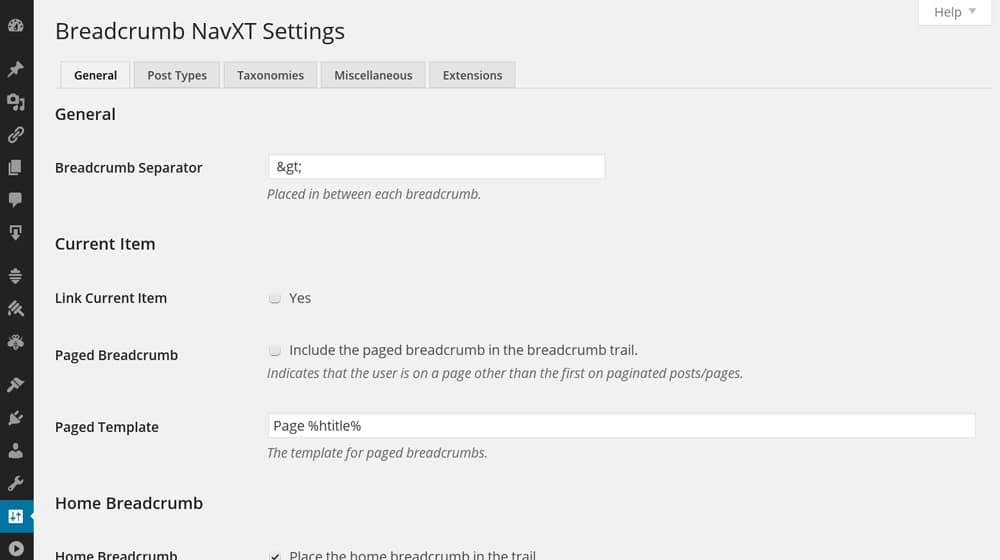
The plugin is automatic (you don't need to insert breadcrumbs every time), contextual because it pulls the category and title of the post, and it's free. It won't significantly impact your SEO or user retention, at least not right away, but there's approximately zero chance that it can hurt you to use it, so it's a 100% win to install it. It is assuming, of course, that you don't already have breadcrumbs set up with a different plugin, anyway.
Link Whisper
Link Whisper is one of the most unique and most robust internal link plugins I've come across. It's very much like Yoast SEO's link suggestions, except it's stand-alone (so you don't have to worry about all the other SEO bloat or conflicts with other SEO plugins), and it's free to get basic link suggestions. The blogger does have to insert them manually, but it's easy to do so. The premium version even allows you to one-click insert links with anchor text already configured.
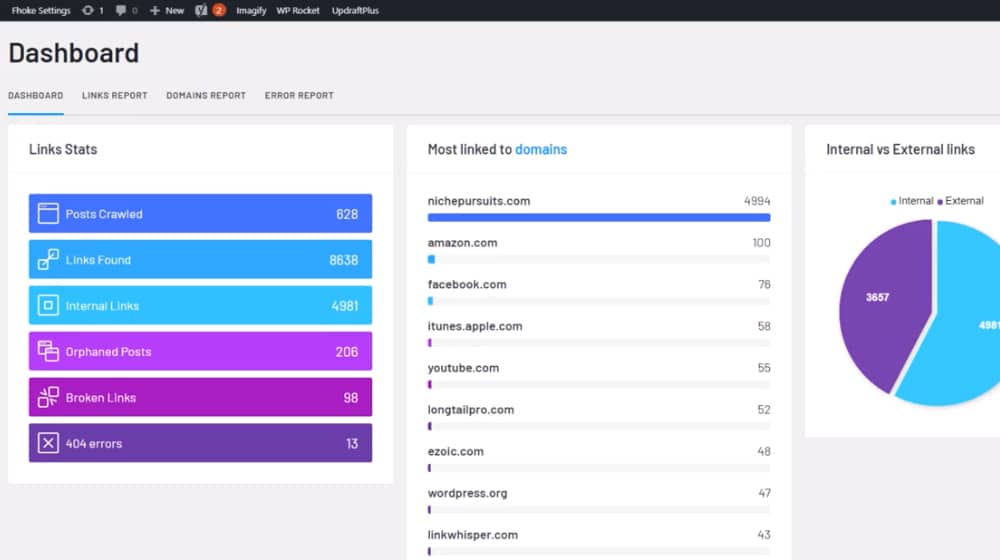
I list both manual and automatic because the free version is manual, and the paid version can be automated based strictly on keywords you configure ahead of time. I don't know that I'd want it to automatically link every instance of a keyword, so I recommend sticking with the manual option, even if you pay for extra features.
Interlinks Manager
Interlinks Manager is designed to be more of a bulk link management tool than a link creator. It analyzes your site, identifies your internal links, monitors link juice and link status, and gives you reports on them. It has a free version that does this, but it doesn't have any of the other features we're looking for.
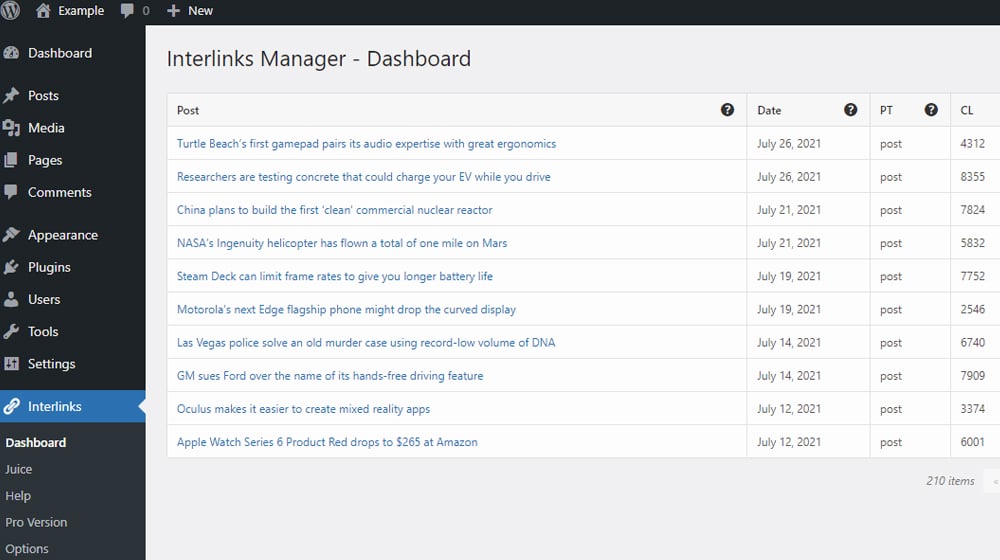
The paid version gives you two options. You can use its scraped data to recommend link suggestions based on the keywords you use in your posts. Or, you can create a keyword-based link injection schedule that adds links to your content wherever they're used in your content.
Overall, it's a relatively simple link manager. You can think of it kind of like a simpler version of Internal Link Juicer.
I can almost guarantee that you've seen this plugin in action before and never realized it. It's present in many high-end publications, including Entrepreneur, Business Insider, and The Wall Street Journal.
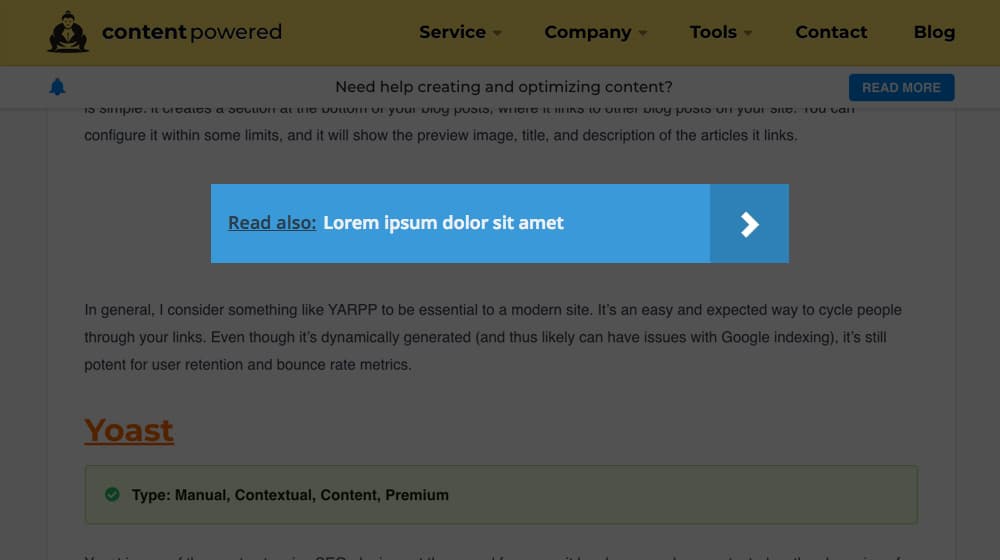
It works almost the same way as YARPP, except instead of adding those internal contextual links to a box below the post, it adds them to a container that can be placed inline in your content. You can add this box pretty much anywhere you can insert an image in the Gutenberg editor. It's free, easy to use, and can help make your site look a little more professional; what's not to love?
Well, it's not particularly robust, and despite inlining the links, I don't consider it content links. Those boxes can be ignored by adblockers, for example, and by Google in many cases. They're great for user retention but less so for your page SEO. Still, it's worth a shot.
LuckyWP Table of Contents
LuckyWP Table of Contents is another plugin I use that you can see at the top of the screen. See that table of contents box, full of links to all of the plugin subheadings? That's this plugin.
Now, I'm cheating a bit with this one. While these are technically internal links, they are anchor links and function a bit differently. They take you to different parts of the same page rather than to other pages on the same site.
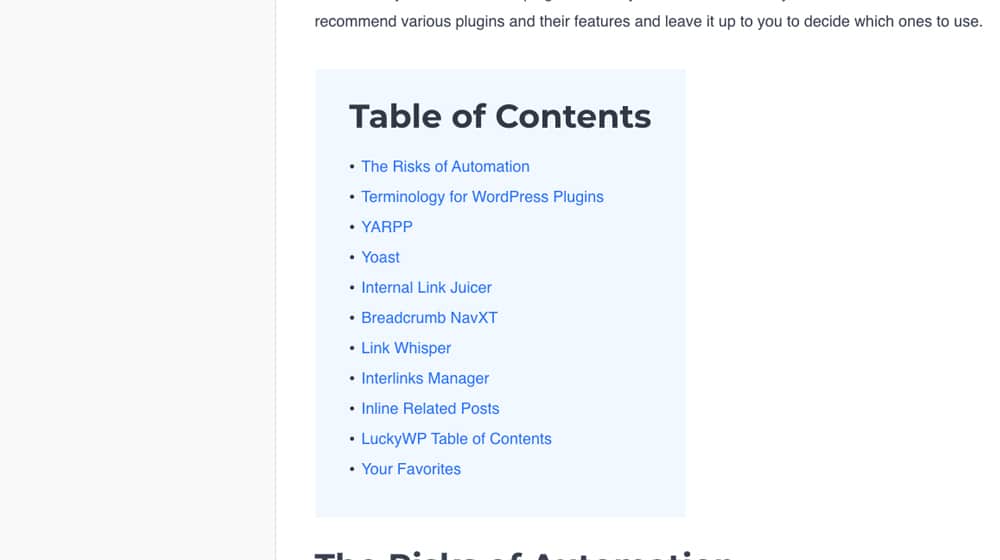
However, that's not to say it won't help your SEO. It's great for SEO because it benefits the user's experience. For users who want to jump to the answers right away, what better way is there than with a table of contents? I recommend this plugin for pretty much every one of my clients and anyone else who asks. I love it, and I think you will too. It's enabled on this very blog post; you'll see it towards the top of this article.
Your Favorites
I know I've only scratched the surface with this list of plugins. There are several more I know of and several major plugins like Rank Math that do the same thing as, say, Yoast. I haven't given them all a try, though, so I'm turning to you.
Have you used an internal linking plugin I haven't? If so, what's your verdict? Please share with me in the comments section; I'd love to hear your thoughts and if we left any plugins out from this list!








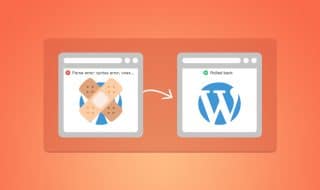

March 12, 2022
It's nice to see an article describig plugins that isnt just the plugin's blurb repeated. You've actually looked at the plugins and shared your thoughts about them. In a sea of lazy "top 10 plugins" articles, your post stands out
March 15, 2022
Thanks Mel! That's what I was going for 🙂 I appreciate it!
July 08, 2022
Great article! Thanks for reminding me of the power of Lucky Table of Contents.
I knew that Dynamic links could not be as effective as Manual links. It makes sense, and I had a clue. But I had a good experience with Internal Link Juicer. But I am looking for an Automatic Tool that places the links once. Maybe with like "Better search-replace."
July 14, 2022
Hey Radek!
Link Whisperer does what you're looking for - you can give it specific key phrases, and it will turn those into hyperlinks if it finds them in your content.
I don't use this feature, personally. It's pretty aggressive, and it might add links in places where you don't want them, like header tags or list items. But I can see the value in it for specific applications.
These tools are super valuable, but it's best to review all recommendations manually. Some of their recommendations are odd, and others are spot on, which is why it's so important to check each one before it starts adding links everywhere.
May 29, 2024
You list some useful plugins. I'm sure it will be helpful to others
May 29, 2024
Thank you, Alex! Which did you end up using?